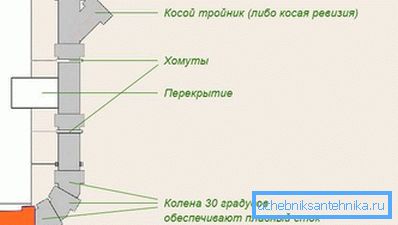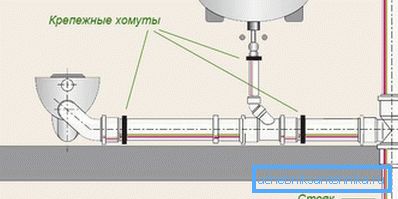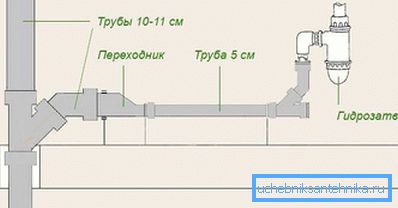Sewerage private house itself
Most of those who live in the apartment, do not think about how the sewage system works and works. However, if you live in a private house, in which there is no centralized sewage system, the question of waste disposal is always urgent for you. To conduct sewage in a private house with your own hands, you need to approach carefully. As a rule, the first step is to install water pipes, and after that the sewage is installed.
Design
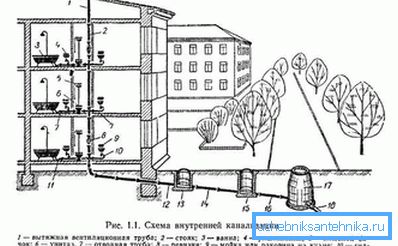
Before you begin work, you need to think and plan everything. The best option would be to make a project: you can think about how to compactly arrange the pipes, as well as take into account the design features of the house. Moreover, the project can provide for the location of sanitary equipment and designate a method for leading pipes to it, indicating the number of fittings required. On certain parts of the system, you must specify the diameter and the footage. This information is useful to you when purchasing construction material. So, now let's see what is required to complete the work.
We collect building material and tools
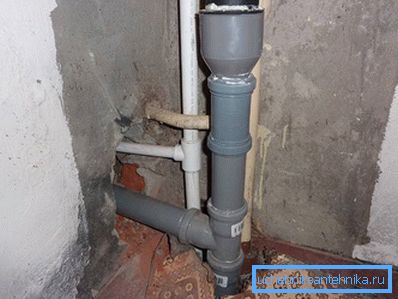
The main element of the internal sewage system is the common riser. It is used to discharge all waste. After drains fall into the external sewage system, which leads them to the septic tank. In order for this system to work properly and efficiently, it is extremely important not to save on the quality of building materials. This is perhaps the main requirement for the procurement of materials. So, you will need:
- Pipes of different diameters. As a rule, pipes O 100, 75, 50 and 30 mm can be used in domestic sewage.
- Branches that must match the diameter of the pipe.
- Tees corresponding diameters.
- Gearboxes and adapters.
- Plugs for sockets.
- Pipe fittings.
- Sealant.

When buying pipes, it is important to consider that the diameter of the riser should be the largest. As a rule, pipe O 100 mm is used for removal of drains from the toilet bowl, the same for the riser. The riser is installed in each case in different places. This will affect the feature of your home. As for the tools, you will need:
- Hacksaw.
- Bulgarian.
- Level.
- Pencil.
- Perforator.
- Hammer.
- Set of screwdrivers.
- Gun for sealant.
Features and types of sewage private house
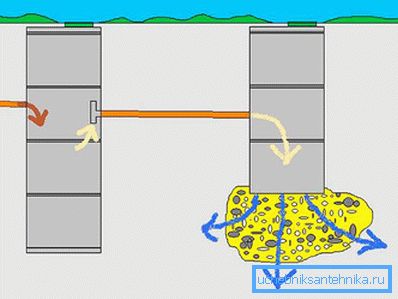
The entire sewage system of a private house is divided into three components:
- Inner.
- Outdoor
- Septic tank or cesspool.
In order to avoid any difficulties during the operation of the sewage system, everything must be carefully thought out.
Domestic sewage
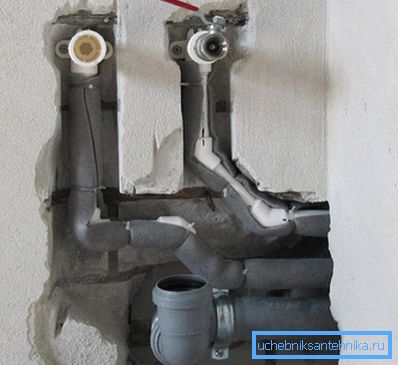
If you compare the urban domestic sewage system with the sewage system of a private house, you will notice large differences, moreover, in a private house it is much more complicated. This is explained by the fact that the autonomous sewage system often serves not only the house, but also a bath, jacuzzi, shower, barbecue, summer kitchen, and so on — buildings are being added that require landscaping. In order for the entire sewage system to work perfectly, it is necessary to grasp the peculiarity of its device, in case of problems, they can be easily resolved. The purpose of domestic sewage - collecting waste from all plumbing fixtures. It consists of:
- Plumbing devices.
- Pipeline
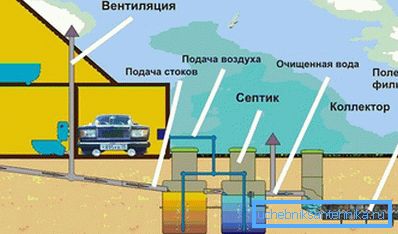
Consider that pipes can be laid both over the walls and inside them. If you want to hide the pipes in the wall, then this is very laborious work. Sewerage can be laid in the floor. Although it is not always possible to hold the pipe. Some plumbing fixtures are designed so that their connection to the sewer requires exactly the presence of an open system. In this case, the pipe under a certain inclination should be attached to the wall with the help of special fixings.
Tip! The most important aspect of laying sewers is strict adherence to slope. Only in this case the possibility of blockage of the system will be minimal.

Note, pipes of different diameters require different slopes. For example, a pipe O 50 mm should have a minimum slope of 25 mm, and the maximum or standard - 35 mm per linear meter. If the pipe is laid O 100 mm, then its slope should be from 12 mm to 20 mm. Accordingly, the pipe O 125 mm - from 10 mm to 15 mm. These indicators are important, because it is from them that one should make a start when making sewage of a private house with their own hands. If you make even a small mistake in the slope, then permanent blockages will be guaranteed to you. For this reason, when laying pipes of any diameter, it is necessary to use a level.
Tip! Maintenance of open sewer pipes is simpler at times. If you put the sewer in the wall, then the problems will increase.
As soon as the system is assembled, it must be checked by pouring water and noticing the flow rate. Here are some tips on how to properly make the inside of a sewer:
- The entrance of the pipe from the plumbing connection side should not be lower than the level of the pipe at the entrance to the sewer riser.
- The branch line laid in the ceiling should not be more than ten meters long.
- All pipes must be connected with special fittings in the form of tees.
- Each joint must have a rubber seal.
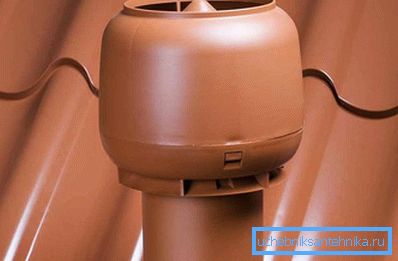
As for the riser, it is a vertically installed pipe, which must be at least 100 mm in diameter. Using a special coupling, at a height of one meter from the floor should be installed revision. Pipes are displayed on the roof to ventilate and prevent vacuum in the system. As a result, the sewer riser goes to the roof. The height of the pipe above the roof should be about 700 mm.

Tip! If there is an unheated room at some part of the route or riser, then the pipe should be insulated.
Riser as a result will be connected with the outer part of the sewer. Her device will be discussed further.
Outdoor sewage

We can say that the installation of outdoor sewage is more complicated and responsible. This also applies to the choice of pipes. Not all pipes will be suitable for this purpose. It is recommended to buy corrugated or PVC pipes made of polypropylene. Before you begin installation, you should consider how the pipes will pass. The system must be mounted without sharp turns. If you need a turn, then make it less sharp. Moreover, it is recommended to lay the pipe at a depth of 800 mm. Like the internal system, the external system should also be laid under a sufficient slope. When the trenches are ready, you can make a small pillow of sand, preferably coarse-grained. The main thing is not to feel sorry for the sand and properly tamp the resulting pillow, because the loosened soil tends to settle. As for the angle of inclination, the calculations here will differ from the calculations for domestic sewage. For example, if a 100O mm pipe is laid in a trench, then for every ten meters the angle should be up to 20 mm. This is an ideal indicator.
Lay the pipe on the outside of the special difficulties will not cause. It is quite another thing to arrange a place for drains, namely, a septic tank. Here there are several solutions to this problem:
- Install an autonomous treatment plant.
- Install a septic tank with mechanical cleaning with the presence of a filtering well.
- Construction of a sump.
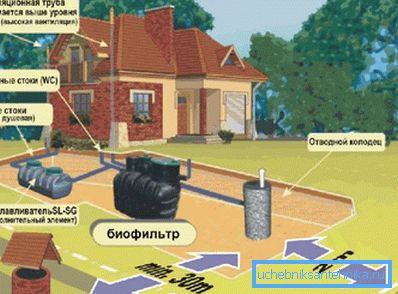
This septic tank should be located at a minimum distance of 6 meters from residential buildings, as well as be at a sufficient distance from water sources and other technical facilities.
This article outlines the general principles of how to install sewage in a private house. All the rest is yours.
Video
About the choice of pipes for sewage:
A photo
